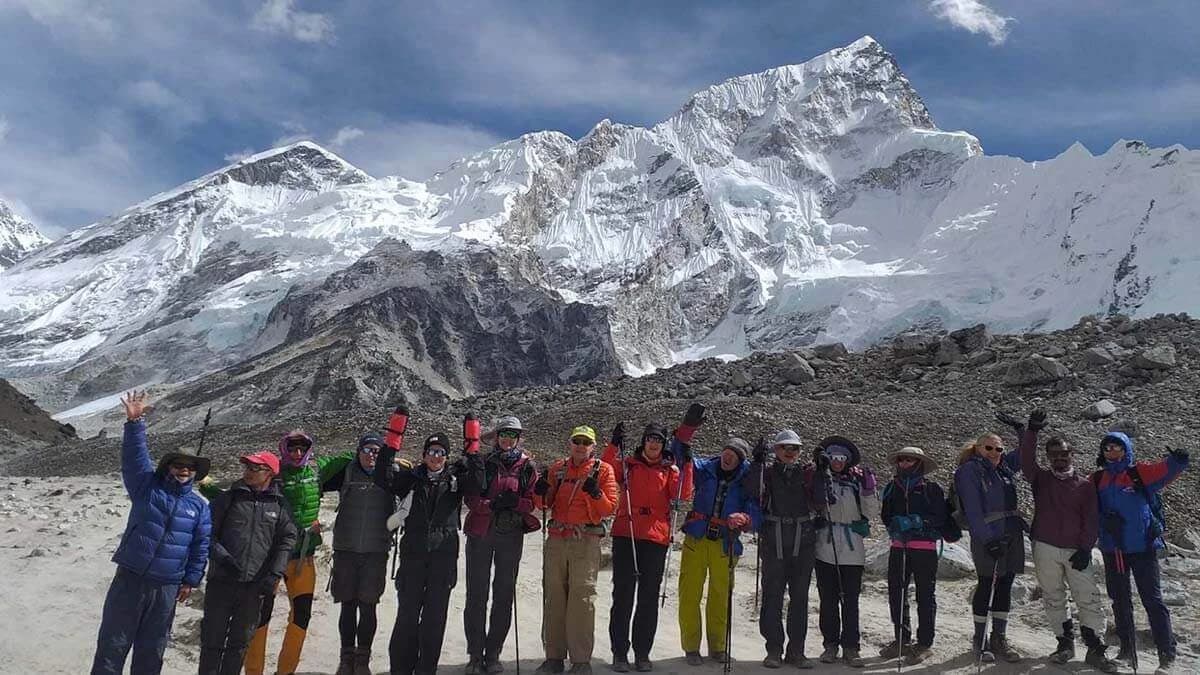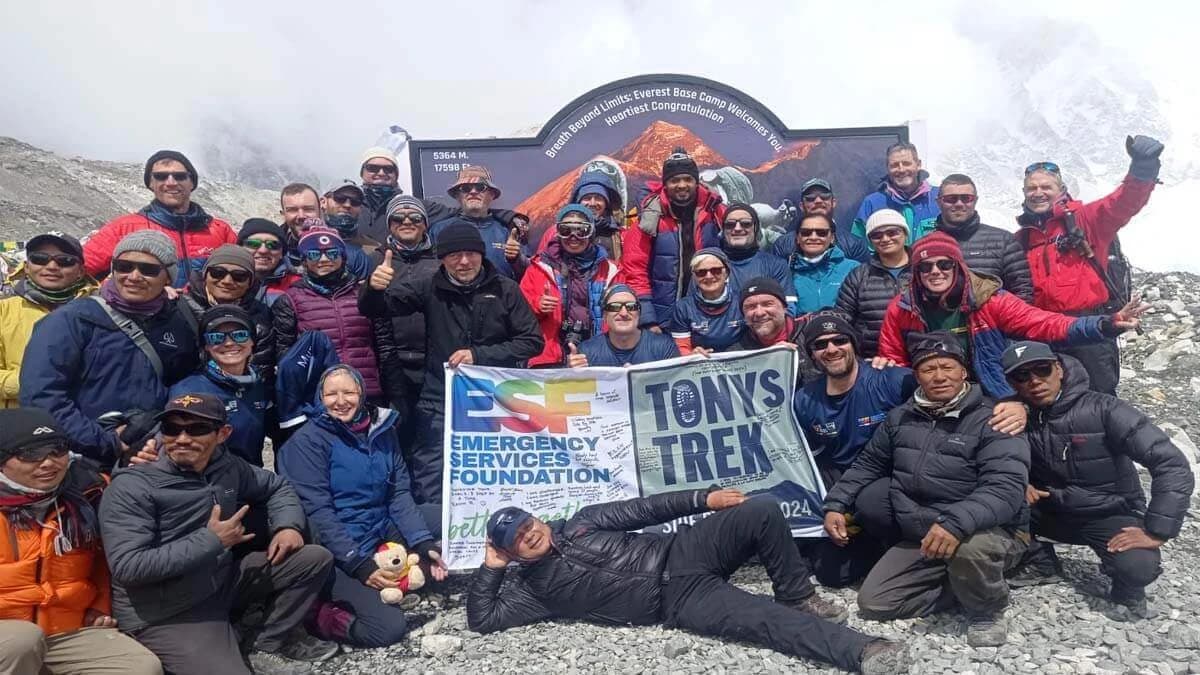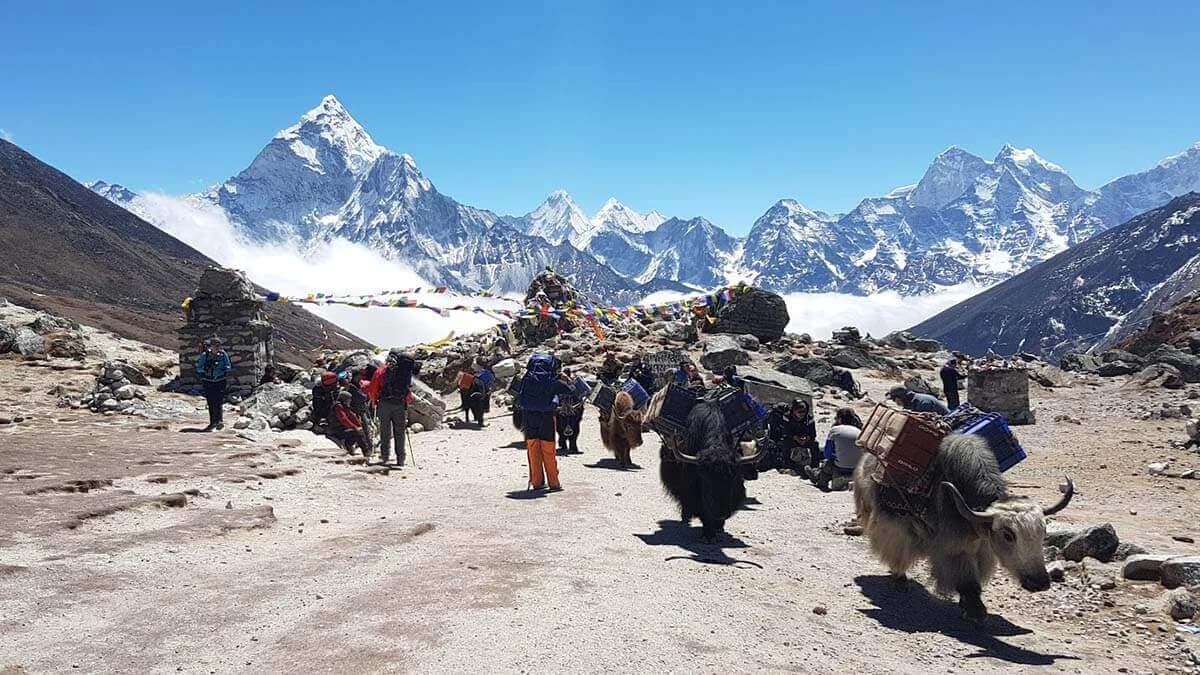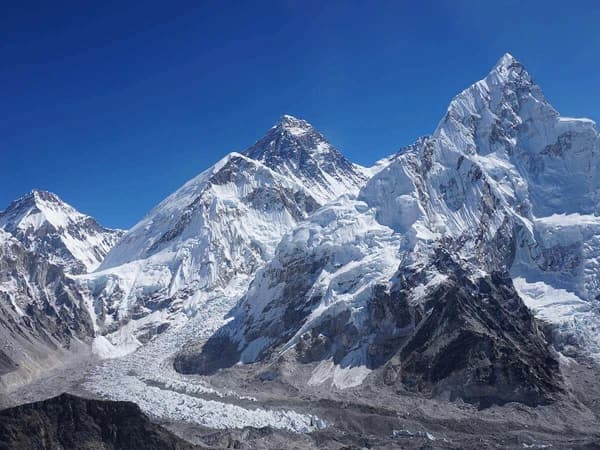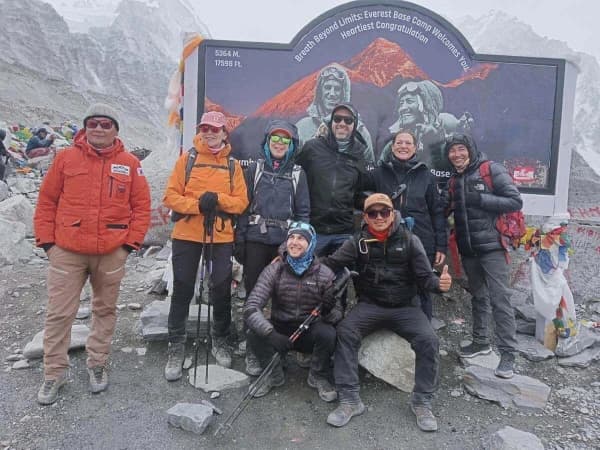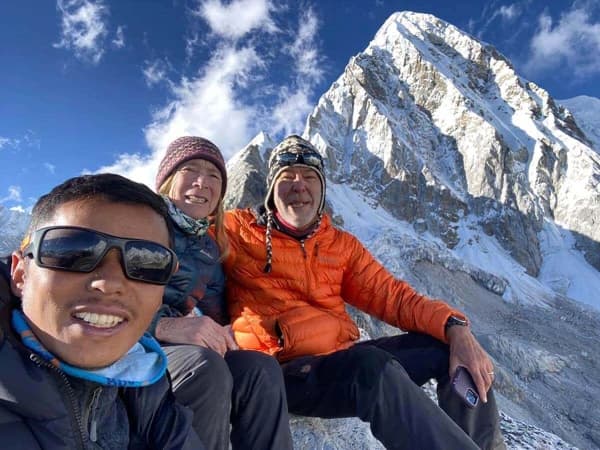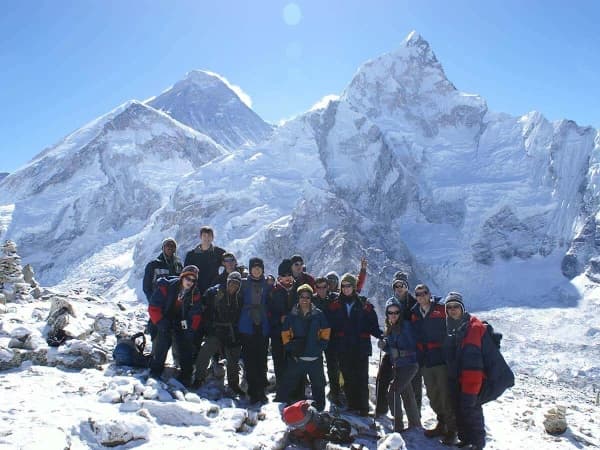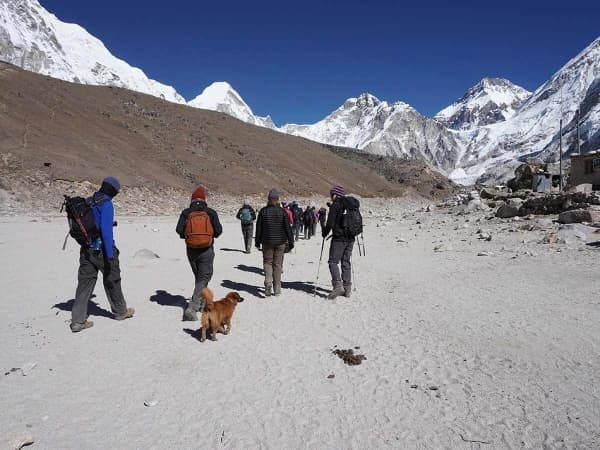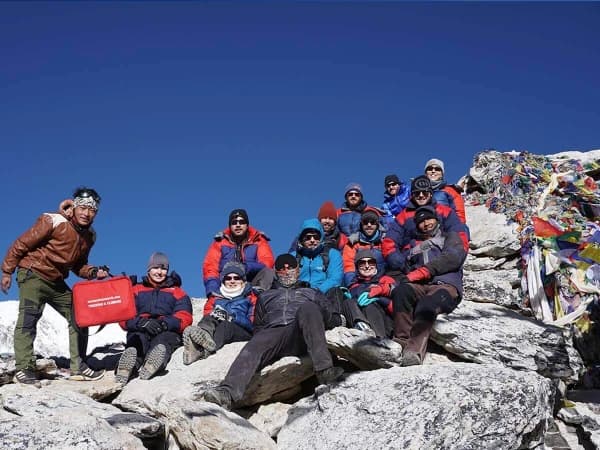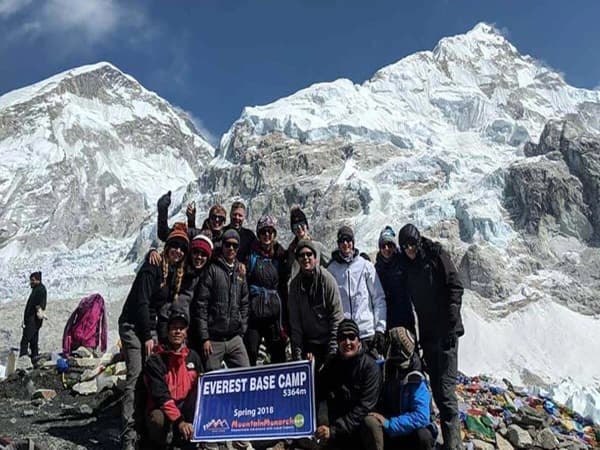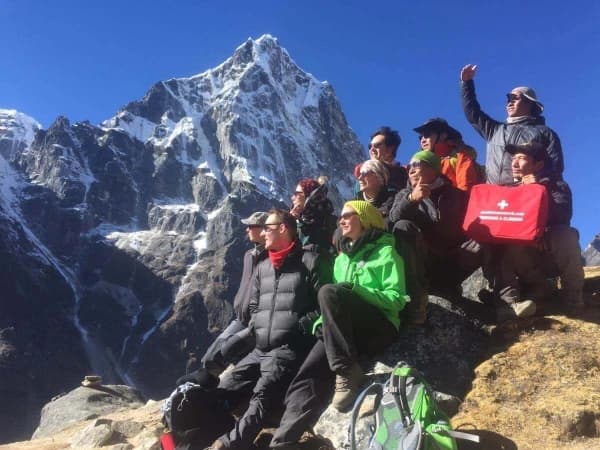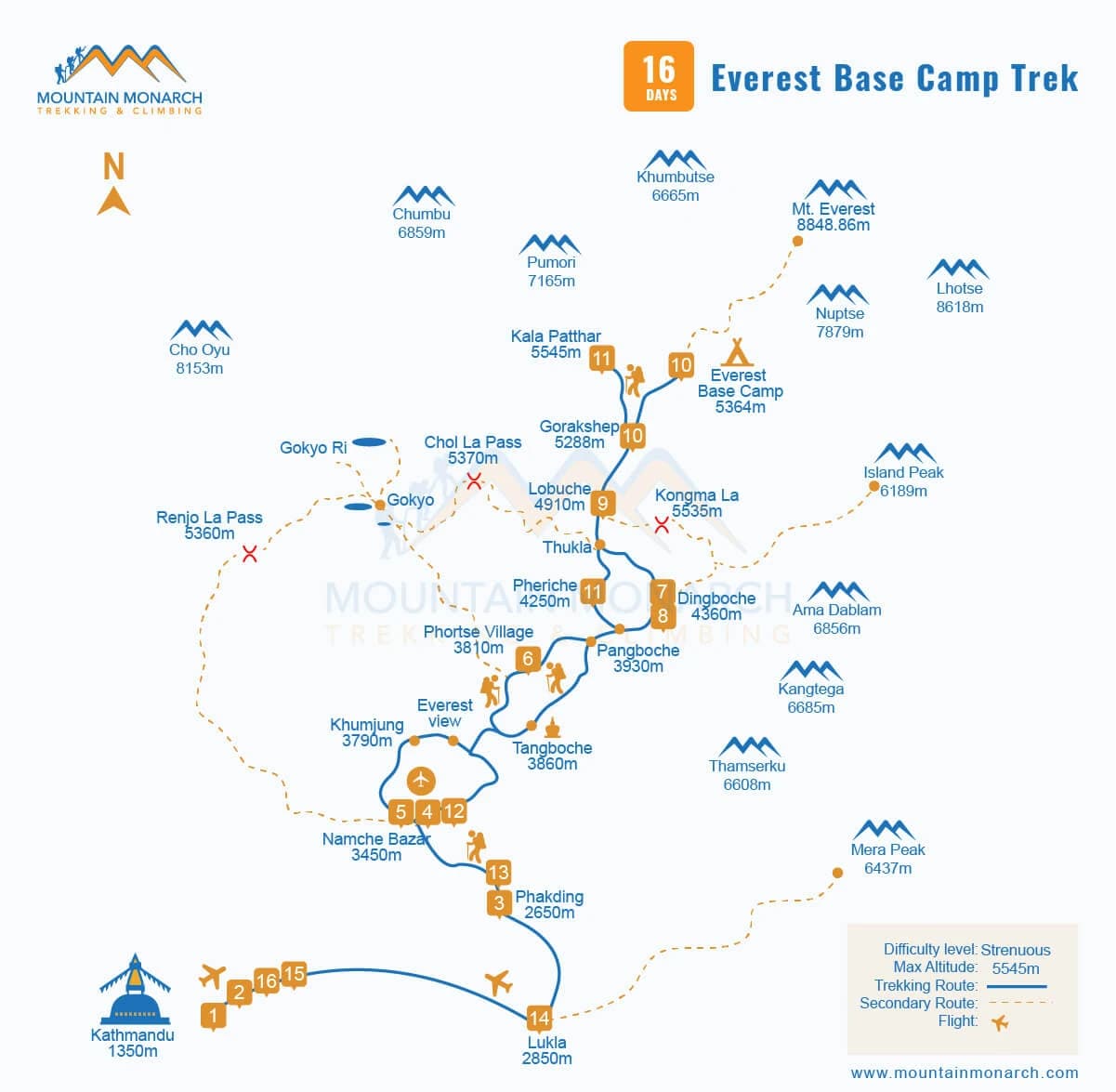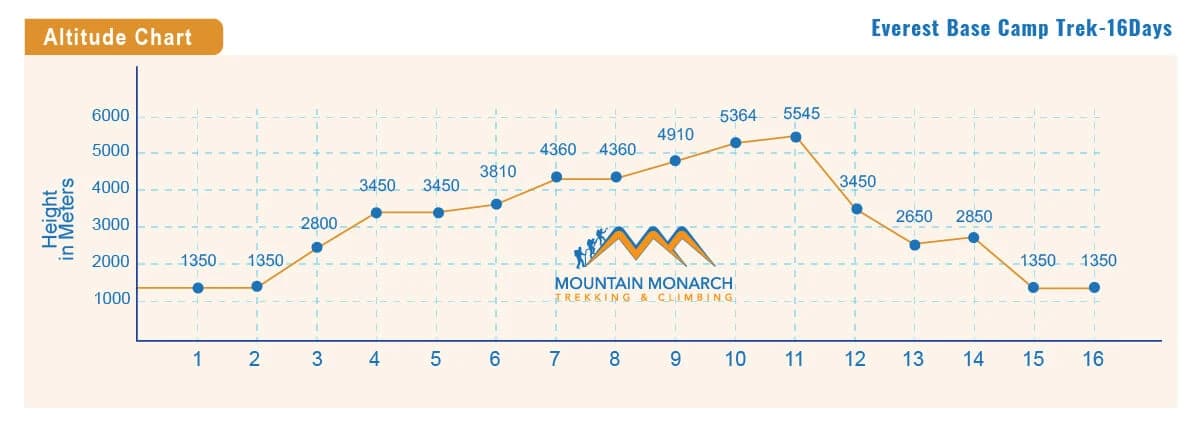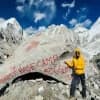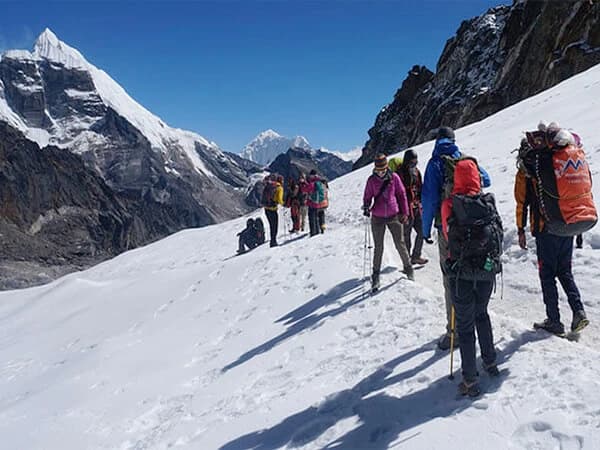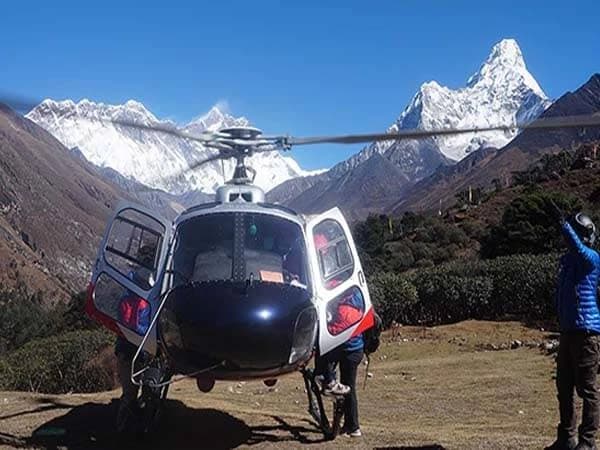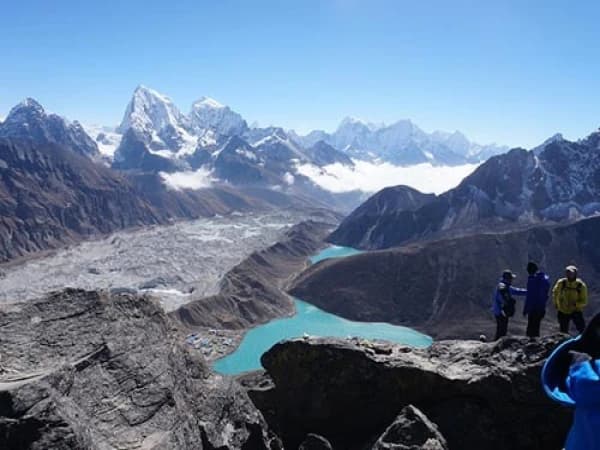Trip Overview
The Everest Base Camp Trek is an adventure of a lifetime that unlocks the majesty of the Himalayas in every step as you move closer to the majestic heights of the highest peak on the earth at its base camp, Everest Base Camp (5,364 m/17,598 ft) above sea level on the southern face in Nepal. It is not just a high-altitude trek; it is also a fascinating journey to discover the best perspective of the magnificence of Mount Everest, encompassing genuine Sherpa culture, stunning landscapes, and the legendary Khumbu Valley.
Upholding a golden opportunity to make dream come true, the Everest Base Camp Trekking begins with a 40 minute quick and scenic Everest Mountain flight to Lukla. Leave your mark at the iconic world’s highest base camp, promising unforgettable memories throughout the hike.
Why Choose the 16-Day Everest Base Camp Trek?
The Everest Base Camp 16 Days Trip officially commences with an adventurous mountain flyover to the world’s most thrilling airport, Tenzing-Hillary Airport, due to its short runway in the remote Himalayas at high altitude. Then, the Everest Base Camp Trekking gradually progresses through the traditional Sherpa villages dotted in between lush forests of oak, pine, and rhododendron of the Sagarmatha National Park, which again is home to a wide array of flora and fauna, including rare species of red pandas, Himalayan Thar, black bears, and snow leopards.
Several highlights make this Everest Base Camp Trek 16 Days stand out as one of the world's best hiking and trekking destinations. Among them, here are what to expect as you hike to the Everest Base Camp in 2025/2026:
Why Trek to Everest Base Camp is a Dream Come True Adventure?
Everyone at some point in life has planned to stand at the top of the world, Mount Everest. While it may not be possible for all, standing at Everest Base Camp caters to almost every type of adventurer globally with reasonable fitness at an affordable cost. Hiking through the Dudh Koshi River, the Everest Base Camp Trekking goes through the Sagarmatha National Park, Nepal's first natural World Heritage Site since 1979.
It is home to some of the highest peaks in the world, where hiking to Tengboche Monastery, Buddhist Gompas, and typical dwellings of Sherpa refines the cultural and spiritual experience as you walk past Pangboche, Dingboche, and Lobuche. Further, this Everest Base Camp 16 Days Trip itinerary is customizable as per your personal preferences and requirements, forging unparalleled memories, leading to a place that is not just a point on a map but also a place where dreams are realized.
The trail to Everest Base Camp traverses the majestic Himalaya scenery of Sagarmatha National Park, where each day sojourners experience nature's grandeur in a completely different world of the Everest Himalayas, moving through beautiful thick forests of oak, pine, and rhododendrons to rocky terrain.
What makes the Everest Trekking Trail landscape so unique?
The Everest Base Camp Trekking route traverses the majestic Himalaya scenery of Sagarmatha National Park, where each day sojourners experience nature's grandeur in a completely different world of the Everest Himalayas, moving through beautiful thick forests of oak, pine, and rhododendrons to rocky terrain. An ideal trip for even beginners with good physical fitness, this Everest Base Camp Trekking Trail leads to the Everest Base Camp, offering the dramatic Khumbu Glacier and Khumbu Icefall.
Mount Everest captivates the hearts of trekkers from various parts of the world, where the vibrant culture of mixed ethnic communities, especially that of Sherpas, adds much to the cultural heritage. Though strong Tibetan Buddhist influence can be found along the route dotted with several Mani Walls, monasteries, and Gompas, including Tengboche and Pangboche Monastery, usually adorned with prayer flags, they are rich in distinctive ways of life, dialects, and cultural attributes. Fused with the natural beauty of the Everest Trekking Region, it has resulted in a never-before-seen unique landscape.
How to enhance the cultural immersion during the Everest Trek in Nepal?
The Sherpa culture is an integral element that makes the Everest Base Camp Hike beyond just mountains and hills. You opt for staying in tea houses and homestays opened by Himalayan locals of the Khumbu. Everest Trekking Region Nepal— You need to experience and observe the simple yet deep cultural way of life of locals. The typical stone-roofed houses of such places as Namche Bazaar, Tengboche, and Dingboche provide an experience of immersion like nothing else into rich Sherpa culture: ask local customs and culture to enhance these cultural encounters during the Everest Base Camp Trip. Try your best to learn some Nepalese words to communicate with locals, and your trek guide will do his best to help you to know the basic words while on your journey to the base camp of Everest.
Be open-minded and aware of actions that may be culturally inappropriate. Always hire guides who know their way around the patches, people, and ancient culture; otherwise, they fill a linguistic gap as cultural ambassadors, meaning they make a real connection between the locals, you, and the Himalayas. Also, sample local cuisines, and try to coordinate your time of visit with some of the largest festivals in Nepal. The biggest are Dashain, Tihar, and Mani Ridum in Everest, which usually fall during the months of autumn.
Culture, Monastery, and Sherpa Hospitality on Journey to Everest
The Everest base camp trekking is not only about the enormous mountaineering and mountain views but also a very deep cultural and spiritual voyage in the Himalayas that is rather rich in culture, spirituality, and warmth of the people called the "Sherpas," which are the people generally known as the guardians of Himalaya and which are deep-rooted in Tibetan Buddhism. They live in typical roofed houses made of stone adorned with colorful prayer flags, Mani stones inscribed with sacred chants, and Chorten symbolizing peace along the trail.
Trekkers can visit historic monasteries at Namche, Pangboche, and Tengboche, the largest in the region, which offer stunning views of the Ama Dablam and Everest. This Tengboche monastery hosts the vibrant Mani Rimdu festival in November in serenity, giving rise to an abundance of spiritual energy. Therefore, during the trek to Everest Base Camp in 2025/26, anticipate a transformative holiday experience like never before in the Nepalese Himalayas at the footstand of the top of the world, Mount Everest.
Get ready for the journey of a lifetime with the Everest Base Camp Trek
The trekking journey to the Everest Base Camp is a classic Himalayan voyage that unfolds the mystery of the Everest Himalayas in 16 days, where adventure kicks off with an ascent to Namche Bazaar, the famous Sherpa capital. Lying at an impressive height of 3,440 m above sea level, you will spend two nights here soaking in the splendid cultural and natural beauty of the Everest Himalayas while your body adapts to the high altitude, and the phenomenon is called acclimatization.
This process is not just precautionary against acute mountain sickness (AMS) or altitude sickness but rather an impetus for a resounding safe yet thrilling Himalayan odyssey. Our specially created trekking itinerary to Everest Base Camp takes you across the mesmerizing Khumbu Valleys through beautiful little villages so that at least some time is left to explore, mingle with fellow trekkers, and enjoy the mind-boggling scenery in the virgin world around. To complete a spectacular holiday, this must be added to the bucket list: Everest Base Camp Trek 2025/2026.
What can you expect during the final push and return journey to Everest Base Camp?
With your body ready, mindset, and packed well, you will head towards Lobuche from Dingboche and then to Gorak Shep, eventually leading to Everest Base Camp at an elevation of 5,364 m above sea level. This Everest Base Camp trip is ideal for all ages, experience levels, and budget levels. But if you are seeking something more challenging that tests your physical and mental strength, you can always extend your visit to the Everest Three Passes Trek and Everest Circuit Trek via Gokyo Lakes and Cho La Pass.
Nevertheless, the Everest Base Camp Trekking is a golden chance to reach the base of the highest peak on the earth. If your hike is in the spring or autumn, taken as the peak trekking and climbing season in Nepal, you can expect to meet courageous mountaineers and climbers stationed on base camp or below to conquer the peak itself to leave you astounded. But wait, there is more! While you are on the way, Kala Patthar at 5,545 m above sea level is a different league in itself. Sunrise over the Himalayas and sunset while the sun hides behind the gigantic mountain ranges are particularly famous for here to witness the golden rays of sunlight illuminate Everest and the iconic Khumbu Icefall and Glaciers.
Serving as one of the best viewpoints to see Mount Everest at its fullest glory, here is also the highest elevation you will arrive at during the Everest Base Camp Trekking Himalayan voyage. As you make your way back to Lukla to end this amazing hike to Everest Base Camp, you will still be left with a lot to explore. From ornately decorated monasteries in Pangboche and Tengboche to legendary landmarks, it's time to let yourself be all in the rich cultural and natural tapestry of the Everest Region.
What is the cost of a trip to Everest Base Camp (EBC)?
The Everest Base Camp Full Package Trek 2025 and 2026 costs can vary based on the length of the trek, the type of food and accommodation, and the services you are opting for, including the time of year. Usually due to high demand, spring and autumn treks to Everest Base Camp tend to get slightly costlier than during the monsoon/summer or winter. At Mountain Monarch, we provide an all-inclusive adventure to Everest Base Camp, whose package cost covers everything essential for a successful and hassle-free experience.
From hotel accommodation to the teahouse, our Everest Base Camp Trek Cost includes full meals on the hike, essential permits, a domestic flight to and from Lukla, private and local transportation, and reliable service from trek guides and porters. Not to mention, we also supply essential adventure gear such as sleeping bags, fleece jackets, and duffle bags, free of charge. In addition, this Everest Base Camp trip with us is not without a medically trained guide and support crew with supplementary oxygen as well as a wilderness first aid kit to provide immediate help in need and ensure your journey and peace of mind.
How is the Trekking Itinerary to Everest Base Camp?
The Everest Base Camp Trek 16 Days is a moderately challenging Himalayan odyssey through the rugged and diverse topography of the Khumbu region of Nepal, which once was traversed by Sir Edmund Hillary and Tenzing Norgay to ascend the top of the world, Mount Everest (8,848 m), and made a historical record by successfully reaching it on May 29, 1953. The trekking route is characterized by steep ascents, descents, and flat stretches from Lukla to Everest Base Camp and vice versa that gradually descend to Phakding (2,160 m) at first before climbing uphill to Namche Bazaar (3,440 m), rewarding you with the first-ever peek of Mount Everest.
In the bustling Sherpa hum, acting as the natural amphitheater, you will spend two nights acclimatizing to appreciate the cultural melting pot as you get to meet adventurers from various parts of the earth and prepare for the journey ahead. From Namche, trekkers embark on terrain on the lap of the rugged and lush hills, both guarded by Everest Himalayas, along the trail passing through local cultural and spiritual landmarks like Tengboche Monastery, Dingboche, Lobuche, and Gorak Shep. As the ascent continues, the vegetation gets sparse with the thinner air, especially around Everest Base Camp and Kala Patthar, where high altitude in rugged terrain and steep ascents and descents increase the toughness.
With a bit of fitness, you will be able to walk over some high suspension bridges spanned across roaring torrents, tread uneven unfamiliar trails, and master steep gradients to the famously known Everest Base Camp and then up to the viewpoint called Kala Patthar. In general, there are three different hiking routes to the base camp diverging from Namche Bazaar, and this one is the most popular and regular one by Tengboche, Dingboche, Lobuche, Gorak Shep, and Everest Base Camp. Another Everest trekking route is the longer one via Gokyo Lake and Cho La Pass to Lobuche, joining the classic route.
The last but not the least, one of the best alternative Everest trekking routes is through Namche, Monla, Phortse, and Dingboche, eventually to Everest Base Camp, which is less trodden but equally fascinating. You can go on this off-the-beaten-path route in 2025/26 and return to the route via Thyangboche to avoid the popular crowd and explore more at the same time.
Everest Base Camp Trek Difficulty and Who Can Join it?
Trekking to the Everest Base Camp is one of the most enthralling challenges one can commit to in their lifetime. It is a moderate to strenuous worldwide popular walking adventure to the base camp of Mount Everest at an altitude of 5,364 m. Based on the itinerary, you will walk 5 to 8 hours a day and reach the high elevation of 5,545 m at Kala Patthar, where the oxygen level is about 50% less than at sea level. When you trek with a reputed local travel and trekking agency like Mountain Monarch, the hike is steady, self-paced, and multi-day without requiring ropes or technical climbing skills.
Though it is suitable for most people with average fitness, the Everest Base Camp Trekking route must be taken with respect and trained for and is not recommended for pregnant women and those with heart issues. However, it is always best to prepare for more pernicious altitude-related emergencies, such as altitude sickness, good preparation procedures, and perhaps even a positive attitude towards a successful ascent to the Everest Base Camp.
Looking for a Group to Join in Spring or Autumn 2025 or 2026?
Whether you are looking for a group to join in spring or autumn 2025 or 2026 or simply a group to join on the 16 Days Everest Base Camp Trip, you can join any of our suitable trek dates on our site to the base camp of Mount Everest in Nepal. Out of thousands of outfitters to travel with, we stand at the edge for our safety and quality commitment.
We have fixed individual groups of friends and families joining for 16 days of Nepal Everest Base Camp Trekking, ensuring fixed departure dates even for this spring and autumn of 2025 and 2026 for you to book online and be part of an amazing Himalayan trip. We are the first choice of trekkers around the globe for the safe and unforgettable adventure experience of a lifetime and joining our regular Mount Everest base camp. All nationalities who understand English can join our regular trekking group adventure trip to EBC.
What is the safety backup for the Everest Base Camp Hike?
The Everest Base Camp Hike is a unique trek to the Himalayas that comes with its own set of hardships and rewards. But, at Mountain Monarch, your safety is our utmost priority, and below is how we ensure a secure, seamless, and immersive trekking experience to the base camp of Mount Everest in Nepal:
- Medically Trained Guides and Supplementary Oxygen on Trek: Each trek from Mountain Monarch is led by guides with medical training for high-altitude regions, who are well equipped with oxygen supplies and essential medications.
- Sufficient Trek Crew: Our team is well-staffed to deal with any unexpected situations that may arise on trips. They are well aware of unforeseen circumstances and are 24/7 ready to help.
- Slow and Steady Approach: Our itinerary lets you maintain your pace without rushing the step and encourages you throughout the trip. It is good for acclimatization and reduces the risk of altitude sickness that can occur to anyone ascending rapidly, regardless of age, fitness level, and experience.
- Weather Preparedness: We keep monitoring the changing weather of the Himalayas and its condition closely for your safety and make up-to-date informed decisions during the trek so you don’t have to worry about anything burdening you and your hike to Everest Base Camp.

